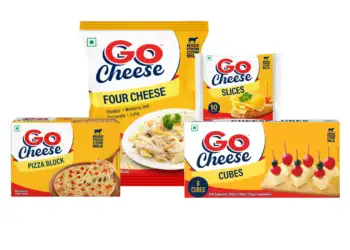**The Korean Wave Hits Indian Quick Service Restaurants (QSRs): A Flavorful Trend**
The global impact of the Korean Wave, or *Hallyu*, is undeniable. From K-pop to K-dramas and skincare, Korean culture has taken the world by storm, and the food sector is no exception. In recent years, Korean-inspired dishes have started to make their presence felt in the Indian market, thanks to the country’s growing fascination with the bold, garlicky, and spicy flavors of Korean cuisine. Major QSRs (Quick Service Restaurants) in India have been quick to recognize this trend, introducing Korean-inspired menus to capture the growing appetite for these new flavors. The latest players to join the Korean food trend are McDonald’s and Burger King, both of which have launched K-inspired menu offerings to cater to the ever-evolving tastes of Indian consumers.
### McDonald’s and Burger King: The Rivalry Heats Up with Korean Menus
McDonald’s, a global leader in the fast-food industry, made headlines a few weeks ago when it launched a Korean-inspired menu in India. This move follows the global trend of QSRs introducing new and diverse offerings to maintain their relevance and attract younger, trend-conscious consumers. McDonald’s menu includes a range of Korean-inspired dishes such as the Korean-style burger, spicy fries, and unique sauces that evoke the flavors of Korea, including the ubiquitous gochujang (Korean chili paste) and garlic. The price of the McDonald’s Korean menu starts at an affordable Rs 89 for snacks and Rs 100 for burgers, making it an accessible option for those who wish to explore Korean cuisine without stepping out of the fast-food realm.
McDonald’s India isn’t alone in recognizing the allure of Korean flavors. Its rival, Burger King, has also entered the fray with its own Korean-inspired offerings. The menu includes K-inspired fries, spicy chicken wings, non-vegetarian and vegetarian burgers, as well as chicken nuggets. Priced starting at Rs 200, Burger King’s Korean-inspired menu positions itself as a slightly premium option compared to McDonald’s, but still offers an affordable alternative to dining at a traditional Korean restaurant. To support the launch, Burger King rolled out an extensive marketing campaign executed by Havas India, aimed at engaging the target audience through digital, social media, and television platforms.
The rivalry between McDonald’s and Burger King is heating up as both brands vie for dominance in the burgeoning Korean food market in India. The battle between the two giants is not only about who offers the best Korean food but also about which brand can best tap into the rapidly growing trend of global flavors in India.
### A Trend Fueled by the Global Korean Wave
The rise of Korean cuisine in India is part of the broader global phenomenon of the *Hallyu*—the Korean Wave—which has been influencing cultural trends worldwide for over a decade. What began with the global success of K-pop groups like BTS and BLACKPINK quickly extended to other aspects of Korean culture, including television dramas, movies, and fashion. As Korean culture gained international recognition, it began to influence various industries, with food being one of the most significant areas of cultural exchange.
In India, the Korean Wave has been embraced by consumers who are becoming increasingly open to experimenting with new and diverse culinary experiences. For many Indians, Korean food represents a fresh departure from the usual global flavors like American fast food or Italian cuisine. It offers a unique combination of spicy, savory, and umami-rich flavors that cater to local preferences, while also adding an exotic touch that makes the dining experience feel special.
Fast-food chains like McDonald’s and Burger King are capitalizing on this shift, recognizing the opportunity to introduce global flavors in a format that is familiar and convenient for Indian consumers. This strategy is part of a larger trend of Indian QSRs diversifying their menus to cater to younger generations who are more adventurous with food and more willing to explore new tastes.
### KFC’s Early Adoption of Korean Flavors in India
Interestingly, McDonald’s and Burger King are not the first QSR chains in India to introduce Korean-inspired dishes. KFC, one of the pioneers in introducing international flavors to India, was one of the earliest fast-food chains to embrace Korean cuisine. A few years ago, KFC introduced its popular Korean Chicken Wings to the Indian market. These wings, which were glazed with a spicy-sweet Korean sauce, quickly became a hit with customers, helping to familiarize Indian palates with the bold, fiery flavors of Korean food.
The success of KFC’s Korean wings set the stage for other QSRs to follow suit, confirming that there was indeed an appetite for Korean-inspired dishes in India. By offering Korean-style food in a fast-food setting, KFC helped bridge the gap between traditional Korean cuisine and the everyday consumer, making Korean flavors more accessible to the average Indian diner.
### Korean Snacks: A Growing Trend in India
Korean-inspired snacks are not just limited to QSRs in India. Over the past few years, several snack brands have capitalized on the growing demand for Korean flavors, offering a range of products that bring the bold flavors of Korea to Indian homes.
For instance, two years ago, Maggi, the iconic instant noodle brand, introduced a Korean-flavored instant noodle variant. The product quickly gained popularity due to its unique blend of spicy, tangy, and savory flavors. This fusion of traditional Maggi noodles with Korean seasoning was well received by Indian consumers who were already accustomed to Indo-Chinese flavors, which have a similar spicy and savory profile.
Similarly, Lays, the popular snack brand, launched a range of international flavors, one of which was inspired by Korean cuisine. The chips, flavored with a mix of spices and seasoning reminiscent of Korean dishes, were well received by Indian consumers. These products are particularly appealing to younger audiences who are more likely to experiment with global flavors, as they represent a convenient and affordable way to explore the tastes of another culture.
These snack innovations reflect the growing interest in Korean food among Indian consumers, and they are likely to serve as a stepping stone for more mainstream adoption of Korean cuisine in the future. As consumers become more familiar with Korean flavors through snacks, they may be more inclined to try Korean-inspired dishes at QSRs or even venture into specialized Korean restaurants.
### The Appeal of Spicy, Garlicky Flavors
What makes Korean cuisine particularly appealing to Indian consumers is its bold, spicy, and garlicky flavor profiles, which are highly compatible with the Indian palate. Spiciness plays a central role in both Korean and Indian cooking, and the rich use of garlic, ginger, and fermented ingredients like soy sauce and gochujang in Korean dishes complements the flavors many Indians are accustomed to. Korean cuisine is also known for its deep umami flavors, achieved through the use of fermented foods like kimchi, fermented soybean paste (doenjang), and gochujang, which add a savory depth to the dishes.
Many Indian consumers who are already familiar with Indo-Chinese cuisine—which features a blend of spicy, tangy, and garlicky flavors—are finding Korean cuisine a natural fit. The similarities between Indo-Chinese and Korean food, combined with the global appeal of Korean culture, make it easier for Indian consumers to embrace Korean-inspired dishes.
### The Role of Quick Service Restaurants (QSRs) in Introducing Korean Cuisine to India
Indian QSRs have long been known for their ability to introduce new flavors and trends to the masses. As the demand for international cuisines continues to rise, these restaurants are increasingly turning to Korean-inspired menus to stay ahead of the competition. The Korean food trend in India reflects a broader shift towards more diverse, flavorful, and accessible dining experiences.
By offering Korean-inspired dishes, QSRs make it easier for Indian consumers to try global flavors in a familiar and convenient setting. Fast food chains like McDonald’s and Burger King allow consumers to explore the bold flavors of Korea without the need to visit a specialized restaurant or spend a significant amount of time and money. The affordability of fast food chains, coupled with the novelty of Korean cuisine, makes it an attractive option for those looking to try something new.
Moreover, the introduction of Korean-inspired dishes at affordable prices enables QSRs to reach a broader audience. While traditional Korean restaurants may be more expensive and require a higher level of investment, fast food options provide a more cost-effective entry point for consumers who may be hesitant to try something new.
### Conclusion: The Future of Korean Cuisine in India
The rise of Korean-inspired dishes in Indian QSRs is just the beginning. As Korean food continues to gain popularity, it is likely that more fast-food chains and snack brands will introduce new offerings to meet the growing demand. The fusion of Korean flavors with fast food is a perfect fit for India’s increasingly diverse culinary landscape, and the success of McDonald’s, Burger King, KFC, Maggi, and Lays in tapping into this trend suggests that Korean cuisine will continue to grow in popularity.
With the continued rise of K-pop, K-dramas, and Korean skincare, it’s safe to say that the Korean wave is not just a passing trend. Korean flavors, from spicy wings to sweet and savory burgers, have found a lasting place in the Indian food scene. As Indian consumers embrace the bold, garlicky, and spicy flavors of Korea, the future of Korean-inspired cuisine in India looks incredibly bright—one delicious bite at a time.
Video:
Author: Kashish Ghosh












